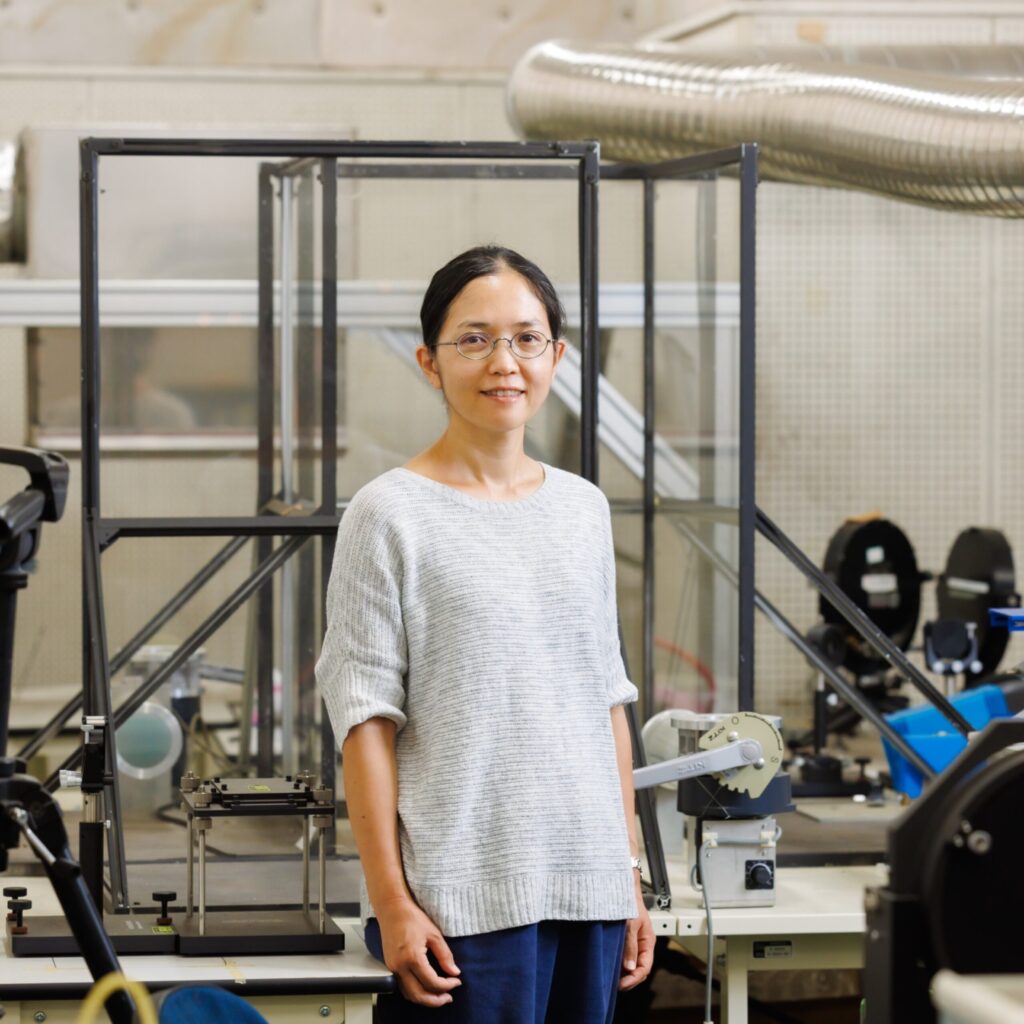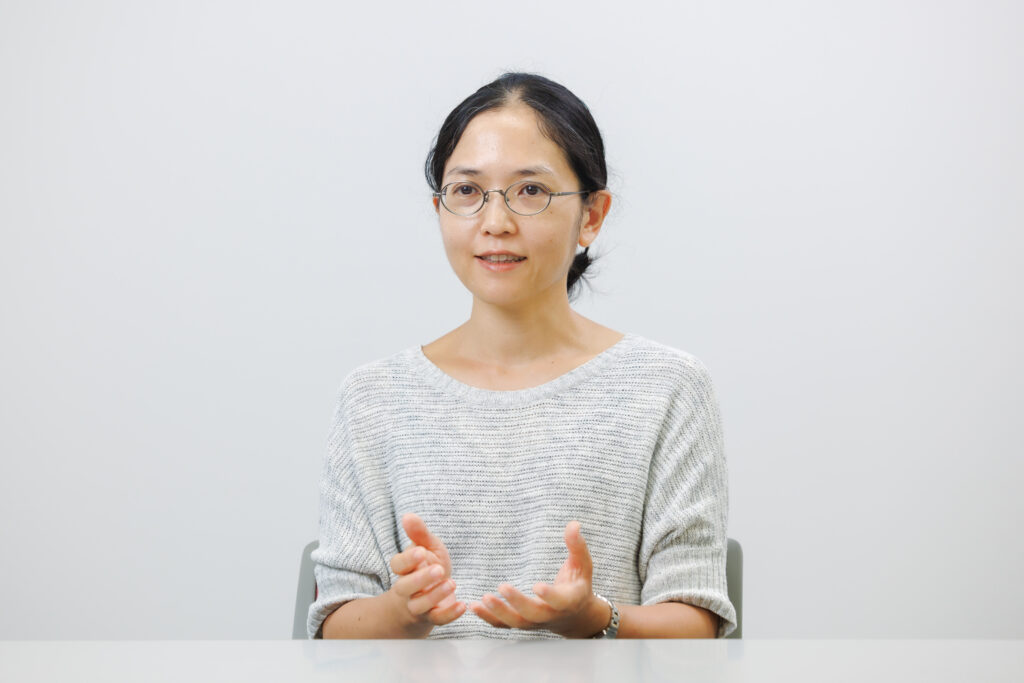
Associate Professor Mariko Watanabe from the Faculty of Science and Technology specializes in computational fluid dynamics. Using computer simulations, she studies firestorms and the movement of medicine in the respiratory system. She talks about the appeal of simulation research, which is useful across many fields.
Inhalants—which are taken by sucking through the mouth—are often used to treat persistent coughing, bad phlegm, and other respiratory illnesses. They are not effective unless they pass through the respiratory tract to spread throughout the bronchial tubes.
However, the respiratory tract is not a smooth tunnel. Its structure is complex and differs with each person. Therefore, individuals may have different places where inhalants flow smoothly and where they accumulate. Information about such differences can be useful in drug administration guidance and inhalant design, but traditionally, there was no easy way to obtain such knowledge.
At my laboratory, we work together with pharmaceutical researchers from other universities on this issue. Specifically, we conduct numerical simulations by applying a particle model simulating the powder of inhalants on a respiratory system model—based on that of the human body—to see the number of particles that spread throughout the bronchial tubes.
Given the large number of particles, investigating the movement of each particle incurs enormous cost and time. It takes skill to reduce computational cost—such as using one particle to represent 100 to 1000 of them—without sacrificing accuracy.
The potential of simulation that can be adapted to respiratory systems and firestorms

The model of the human respiratory system was created from images of actual x-ray CT scans. As humidity is high inside the human body, particles coagulate and grow in size easily. Therefore, the numerical simulation model was also created to take into consideration cases where particles change in size.
Data obtained in this way is useful for drug administration guidance as well as for designing the shapes of inhalants and their containers. In the future, I hope to develop a simplified diagnostic tool that can predict how far inhalants reach by entering parameters of symptoms such as the shape and narrowness of the patient’s respiratory tract.
I am also working on numerical simulations of firestorms. Firestorms are whirlwinds with flames that occur during large-scale fires caused by earthquakes, forest fires, and such. They often cause significant damage, but it is still not clear how they are formed. My focus is on the ever-changing state, such as instantaneous fluctuations in the height of flames and large swirls. This is an area that lacked research in the past.
Research is conducted by carrying out combustion experiments using equipment that we assembled on our own and comparing the results with numerical simulations. If we can unravel the conditions that lead to firestorms, the results can help in developing countermeasures at places favorable to firestorms and forming evacuation plans.
Transcending fields to achieve applications under the theme of multiphase flow
The flow of inhalants inside the respiratory system and firestorms—at first glance there may appear to be no link between the two of them, but they share a similarity: dealing with the flow of solid particles mixed within a gas.
Multiphase flow is used to describe a flow with a mix of substances in different states, such as solid and gas, gas and liquid, or solid and liquid. Both of the aforementioned deal with a multiphase flow of solids and gases. At my laboratory, we pursue multidisciplinary research that transcends various fields with multiphase flow as our theme.
Of course, I am happy if the actual phenomenon can be properly reproduced in simulations, but more than that, I take exceptional interest when an unexpected phenomenon is produced.
Another advantage of simulations is that they allow the visualization of granular data such as the distribution of velocities and temperatures. Such data cannot be obtained through actual experiments. It is possible to observe the shapes of flames and structures of swirls in detail, allowing us to dive deep into physical phenomena. I hope to expand the scope of simulations to bring about various practical applications.
The book I recommend
“Toki wo Kakeru Shojo”(The Girl Who Leapt Through Time)
by Yasutaka Tsutsui, Kadokawa Corporation

This is a story about a girl who can travel freely through time. I was drawn by the concept of redoing the past and the mysterious story progression. Besides this book, I also like science fiction novels that depict the near future while maintaining a sense of reality. I often read them while in grade school as a teenager.
-
Mariko Watanabe
- Associate Professor
Department of Engineering and Applied Sciences
Faculty of Science and Technology
- Associate Professor
-
Graduated from the Division of Mechanical, Materials and Manufacturing Science, School of Engineering, Osaka University and received her Ph.D. in Engineering after completing the doctoral program at the university’s Graduate School of Engineering. Worked at Kobelco Eco-Solutions Co., Ltd. and took on several positions—such as specially appointed lecturer at the Frontier Research Center of Osaka University’s Graduate School of Engineering as well as lecturer at the same graduate school—before assuming her current position in 2012.
- Department of Engineering and Applied Sciences
Interviewed: September 2022